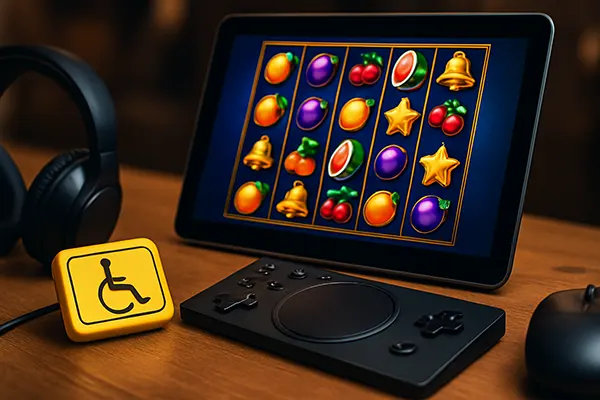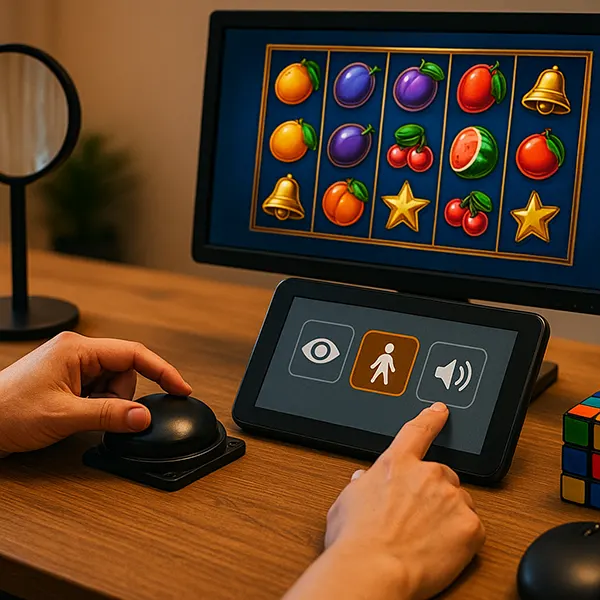
Inclusive Design in Slot Games: Do Developers Consider Players with Disabilities?
In recent years, the issue of accessibility in digital entertainment has become increasingly prominent. The gambling industry, particularly slot games, is now facing growing expectations to address the needs of players with disabilities. But how inclusive is the design of modern slot games in 2025, and what efforts are being made by developers to ensure everyone can play?
Understanding Accessibility Challenges in Slots
Slot games are a visually and auditorily intense form of digital entertainment. For many players, this provides an immersive experience. However, for individuals with visual impairments, hearing difficulties, motor disorders or cognitive disabilities, these games can pose serious challenges. The core issues often involve visual overload, lack of alternative control schemes, and absence of proper audio or textual support.
For example, individuals with reduced vision may find it hard to read small text or distinguish between similar symbols due to poor colour contrast. Similarly, fast animations or flashing lights can be disorienting for neurodivergent players. These challenges call for deliberate design considerations beyond the traditional “one-size-fits-all” model.
Accessibility features such as screen reader compatibility, high-contrast modes, simplified animations, and alternative input methods are still not standard in most slot games. This shows a significant gap in inclusive design within the gambling sector.
Legal and Ethical Responsibilities for Accessibility
Under international regulations such as the Americans with Disabilities Act (ADA) and the European Accessibility Act (EAA), digital products, including gaming software, are expected to accommodate users with disabilities. Although these regulations are not always clearly enforced in the gambling sector, the trend in 2025 is shifting towards more regulatory scrutiny.
Developers and providers who fail to consider accessibility not only risk reputational damage but also potential legal consequences. Furthermore, ethical business practice requires that entertainment be inclusive and considerate of all demographics. Inclusive design is not merely a regulatory checkbox, but a moral imperative.
Companies that proactively address these aspects can benefit from broader customer loyalty and recognition for social responsibility. In a competitive industry, this can also provide a business advantage.
Industry Efforts and Technological Solutions
Some leading game developers have started to prioritise accessibility, integrating new technologies to create more inclusive environments. These include scalable interfaces, voice command functionality, and detailed audio cues designed for players who rely on sound rather than visuals.
Moreover, AI-driven personalisation is gaining traction. In 2025, this includes dynamically adjusting visual complexity, animation speed and contrast based on user settings. Such adaptive technologies improve the experience for individuals with a wide range of needs without compromising game quality for other users.
There are also ongoing collaborations with disability advocacy groups. These partnerships are essential for usability testing and validating whether implemented features truly meet players’ needs. However, these examples remain the exception, not the rule, across the industry.
Examples of Inclusive Practices
Some developers now provide optional game modes designed specifically for accessibility. For instance, “high visibility” modes that enhance symbol contrast, or reduced motion settings to accommodate players with epilepsy or motion sensitivity.
Others have incorporated haptic feedback for key actions, offering an additional sensory channel for players with visual impairments. Likewise, text-to-speech functions help those with limited reading abilities or dyslexia navigate interfaces more easily.
These advancements show what is possible when inclusive design is taken seriously. However, consistent implementation across the gambling sector remains a major challenge as of mid-2025.

What Needs to Change Going Forward?
To ensure genuine inclusion, accessibility must be integrated into the design process from the very beginning — not treated as an afterthought or patch. Accessibility audits, inclusive testing protocols and universal design principles should become standard practice for all developers of slot games.
Additionally, the development community would benefit from clearer accessibility guidelines specific to gambling products. While web and app development have long-established standards, such as WCAG, the gaming sector requires tailored frameworks that account for its interactive nature.
Finally, greater transparency from providers is crucial. By publicly sharing accessibility features and limitations, developers demonstrate accountability and encourage user feedback. This open approach fosters trust and drives continuous improvement.
The Role of Regulation and Industry Standards
Industry regulators must play a stronger role in promoting inclusive design. Setting minimum accessibility standards, offering certifications for accessible products, and requiring disclosure of features can all help shift the market.
Collaboration between developers, regulators and advocacy organisations is essential for creating fair and enjoyable experiences for all. Without a systemic push, accessibility risks remaining a niche concern rather than a universal standard.
Ultimately, the future of gambling should be one where entertainment is not a privilege, but a right accessible to everyone — regardless of ability.
